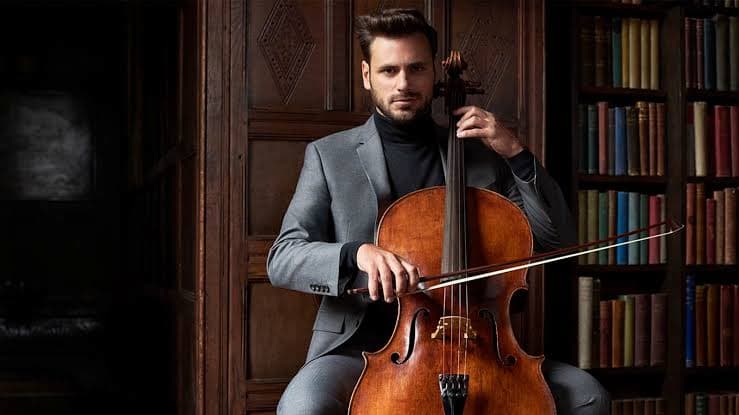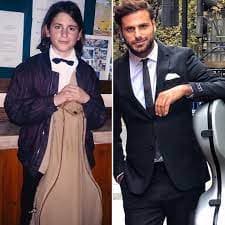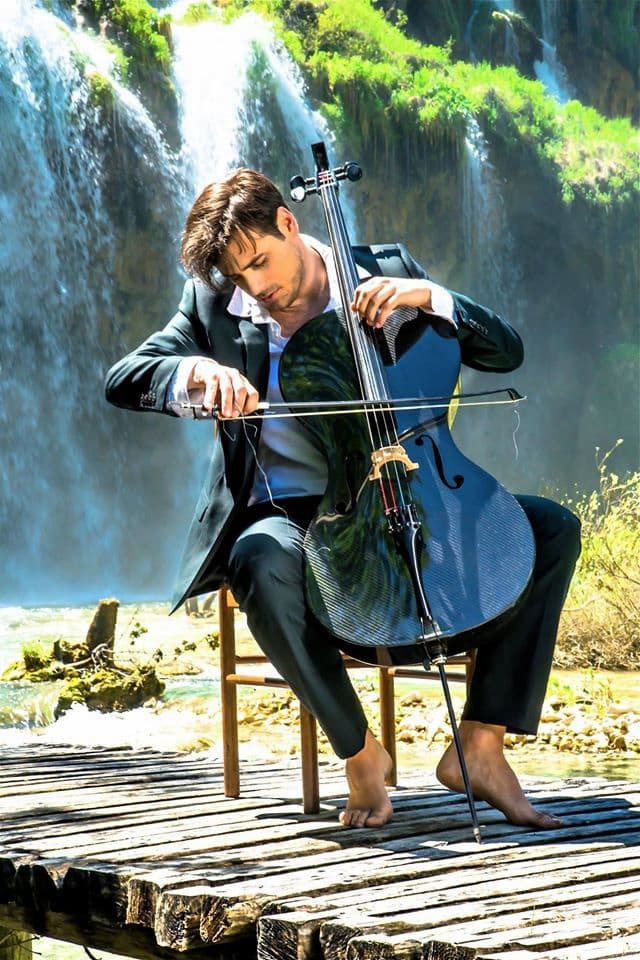Professionally known as HAUSER, the Croatian cellist Stjepan Hauser is passionate about showing the world the versatility of the cello. Alone or with 2CELLOS, he has explored repertoire from Lady Gaga to Tchaikovsky, and from Shakira to Shostakovich. HAUSER decided to create a new musical experience originating in the long established traditions of classical, pop, and rock music. Playing arena concerts all over the world and defying the conventions of established music business, HAUSER has certainly become an internet sensation.
2CELLOS: “Pirates of the Caribbean”
First Encounter with the Cello

Stjepan Hauser
Stjepan Hauser was born on 15 June 1986 in Pula, Croatia, into a musical family. When he first heard a cello on the radio, “it was a life-changing moment because it was the sound which was so special. I could feel these special vibrations. It was such a warm sound, the closest to the human voice, so tender, so warm and I was just drawn to it.”
His mother quickly bought Stjepan a cello and even arranged for a cello teacher to come to their small town so that he could start lessons at the age of 8. Stjepan remembers being very shy as a small child. “I didn’t talk much with other people, so music was actually perfect for me. I entered my own world where I could express all my emotions.”
HAUSER Performs Chopin’s Etude Op. 10, No. 3 “Tristesse”
Studying in London

Stjepan Hauser: From a boy to a man
Stjepan finished secondary school in Rijeka, and subsequently studied at Zagreb, but he completed his undergraduate studies with Natalia Pavlutskaya at Trinity College of Music in London. Already in high school, Stjepan felt very natural on stage and “felt this amazing connection with the audience. But this is why very often I was criticised. Classical music is full of rules about how you are supposed to play and how you are supposed to behave.”
For roughly 25 years, Stjepan was exclusively focused on classical music. As he explained, “I was narrow-minded, stuck, which was good because I had to develop myself as a cellist and a musician first.” Rostropovich and Du Pré became his heroes, and as he started to expand his horizons he listened to great pianists, violinists, and conductors. However, it was time to try something different.
Wolfgang Amadeus Mozart: Piano Concerto No. 21 in C Major, K. 467: II. Andante (arr. S. Hauser for cello and orchestra) (Hauser, cello; London Symphony Orchestra; Robert Ziegler, cond.)
HAUSER

2Cellos
Determined to think outside the box, Stjepan always saw himself performing in front of thousands of people, sharing music and producing something revolutionary, something new, something fresh and crazy. He started to listen for inspiration from Michael Jackson, Elvis, AC/DC, the Rolling Stones, and later from crooners like Frank Sinatra and Dean Martin. As he explained in an interview, “As I got older, I was getting more and more inspiration from outside of classical music. That’s what shaped who I am today.”
HAUSER was ready to ignore all rules about Classical music and finally created what he wanted to do. As he explains, “Now I’m so happy that I have all the freedom to create the show that I want, and nobody is going to tell me what I can or cannot do. This is why I have great success with the audience – they can feel this connection, passion, the love I give to them, and the love they give back to me.”
HAUSER Performs “Caruso”
Music of the Time

Critics have suggested that HAUSER’s greatest talent is his “singular ability to communicate contrasting styles and emotional themes through his playing, such as the essences of love, romance, and sensuality, and even a rock style through his mastering of his instrument.” HAUSER always wanted to see the full picture, looking for multiple dimensions and “seeing music as a visual whole.” According to HAUSER, “music must stimulate all of your sense, your eyes, your ears, everything.”
HAUSER believes he is actually adapting to the times, which are constantly changing. “There are so many new things all the time,” he explained in an interview, “especially for the younger generation, yet the classical music industry hasn’t found a way to keep up with these changing times.” He proudly states that he has found a way to make millions of people interested in classical music and all those beautiful melodies. “I am on a mission to keep classical music alive for younger generations,” he avers, “it’s a big responsibility, but I am blessed to take on this role.”
For more of the best in classical music, sign up for our E-Newsletter
